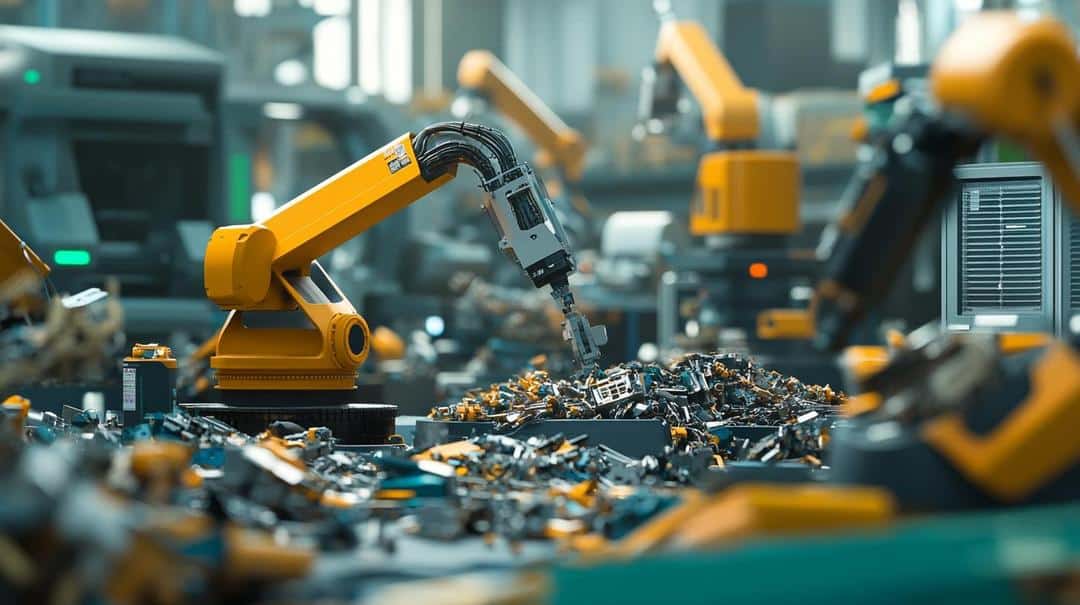Imagine a world without smartphones, futuristic electric vehicles, or renewable energy solutions. Hard to picture, right? Well, that world is a little closer than you might think if we can’t find a way to equalize the rare earth supply chain.
As global demand soars, scientists are finding brilliant ways to turn old gadgets into treasure troves of rare materials without the ecological harm of traditional mining.
Let’s dive in.
What's Inside
What are Rare Earth Recycling Breakthroughs?
Rare earth elements (REEs) are critical components in a wide range of modern technologies, from smartphones and electric vehicles to renewable energy systems and advanced medical equipment. However, the traditional methods of sourcing these elements pose significant environmental and geopolitical challenges.
The Critical Nature of Rare Earth Elements
Rare earth elements are not actually rare, but they are challenging to extract and process. These seventeen metallic elements play crucial roles in:
- Advanced electronics
- Renewable energy technologies
- Medical devices
- Defense and aerospace systems
- High-performance magnets
Global Supply Challenges
The current rare earth element market is dominated by a few key players, with China controlling approximately 80% of global production. This concentration creates several critical issues:
- Geopolitical vulnerability for countries dependent on rare earth imports
- Potential supply chain disruptions
- Price volatility
- Limited access to essential technological materials
Environmental Risks of Traditional Mining
Traditional rare earth mining presents substantial environmental challenges:
- Extensive land destruction
- Significant water pollution
- High carbon emissions
- Radioactive waste generation
- Toxic chemical contamination of surrounding ecosystems
Recycling as a Sustainable Solution
Rare earth recycling emerges as a critical alternative to traditional mining, offering multiple benefits:
- Reduced environmental impact
- Decreased dependency on foreign suppliers
- Conservation of natural resources
- Lower carbon footprint
- More sustainable technology production
Recycling Technologies and Processes
Current rare earth recycling approaches include:
- Hydrometallurgical processes (opens in a new tab)
- Pyrometallurgical extraction methods (opens in a new tab)
- Biological leaching techniques (opens in a new tab)
- Advanced separation technologies (opens in a new tab)
Economic and Strategic Implications
Rare earth recycling represents more than an environmental strategy—it’s a critical economic and national security imperative:
- Reduces reliance on limited global supply chains
- Creates new green technology jobs
- Supports domestic technological innovation
- Mitigates potential resource conflicts
- Promotes circular economy principles
Technological Innovations
Emerging recycling technologies are making significant strides:
- Improved separation techniques
- More efficient extraction processes
- Lower-energy processing methods
- Enhanced chemical recovery systems
The future of rare earth recycling looks promising, with ongoing research and development pushing the boundaries of what’s possible in sustainable resource management.
Conclusion
Rare earth recycling is fast becoming a critical part of the sustainable tech revolution. With incredible breakthroughs in biotechnology, AI-assisted sorting, and materials science, the future of rare earth recycling looks extremely promising—both for the planet and for industries dependent on these precious elements.
FAQs
What are rare earth elements?
Rare earth elements (REEs) are a group of 17 elements used in various high-tech industries, including automotive, electronics, and renewable energy.
Why is recycling rare earths important?
Recycling rare earths reduces the need for environmentally destructive mining practices, limits supply-chain disruptions, and lowers the ecological footprint of producing high-tech devices.
How does rare earth recycling work?
Most recycling methods involve processes like leaching, physical separation, and pyrometallurgical techniques to extract REEs from electronic waste, magnets, or other materials containing rare earths.
Who is leading the rare earth recycling industry?
Currently, China leads in processing rare earths, but companies like Hitachi and nations such as the U.S. and several in Europe are making strides to reduce reliance on mined REEs by using recycled materials.
What challenges does rare earth recycling face?
Challenges include high costs, limited infrastructure, and technical limitations in retrieving REEs from low-concentration waste streams.


Dustin
Driven by a fascination with rare earth elements and their role in powering modern tech and engineering marvels. A true car and tech enthusiast, he loves exploring how these hidden heroes fuel our most exciting innovations.
You Might Also Like…